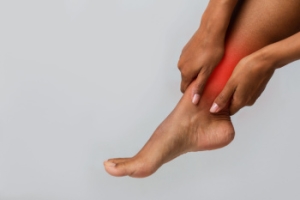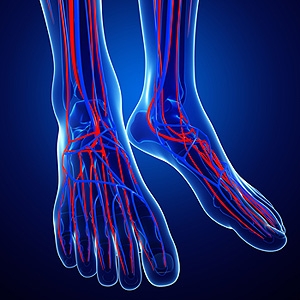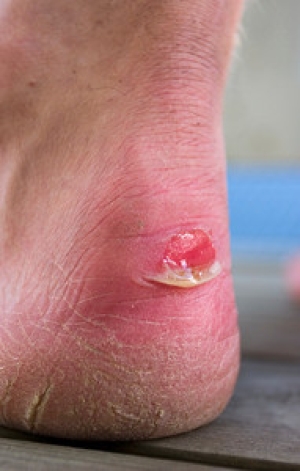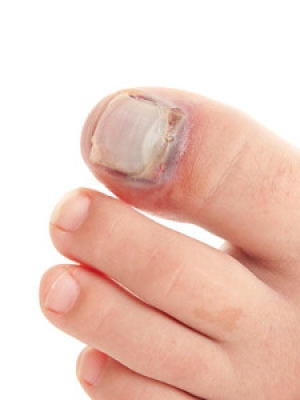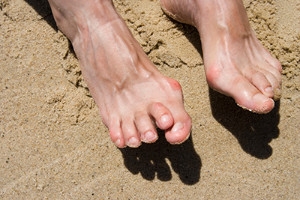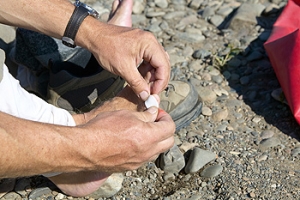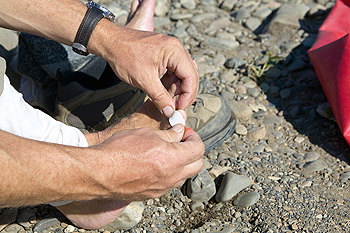
Types of Foot and Ankle Tendon Pain
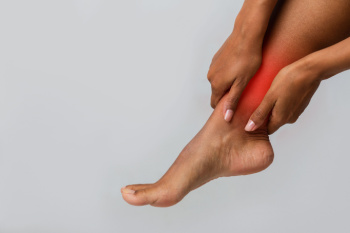
Tendon pain often arises from conditions that affect different parts of the foot and ankle. Posterior tibial tendinopathy, often linked to flatfoot deformities, commonly causes pain along the inner ankle and arch. Peroneal tendinopathy affects the tendons on the outer ankle, and is sometimes mistaken for, or associated with ankle sprains. Tibialis anterior tendinopathy, which impacts the front of the ankle and midfoot, can cause pain during activities like walking or running. A podiatrist can assess your ankle pain using imaging studies to pinpoint the affected tendon and rule out other issues. Treatment typically includes specialized support, such as orthotics or ankle braces, to stabilize the foot and reduce strain on the affected tendon. In more persistent cases, advanced options like immobilization or surgery may be considered. Addressing tendon pain early can help restore function and prevent worsening symptoms. If you have foot or ankle tendon pain, it is suggested that you schedule an appointment with a podiatrist for an exam and treatment.
Ankle pain can be caused by a number of problems and may be potentially serious. If you have ankle pain, consult with one of our podiatrists from The Foot Specialists. Our doctors will assess your condition and provide you with quality foot and ankle treatment.
Ankle pain is any condition that causes pain in the ankle. Due to the fact that the ankle consists of tendons, muscles, bones, and ligaments, ankle pain can come from a number of different conditions.
Causes
The most common causes of ankle pain include:
- Types of arthritis (rheumatoid, osteoarthritis, and gout)
- Ankle sprains
- Broken ankles
- Achilles tendonitis
- Achilles tendon rupture
- Stress fractures
- Bursitis
- Tarsal tunnel syndrome
- Plantar fasciitis
Symptoms
Symptoms of ankle injury vary based upon the condition. Pain may include general pain and discomfort, swelling, aching, redness, bruising, burning or stabbing sensations, and/or loss of sensation.
Diagnosis
Due to the wide variety of potential causes of ankle pain, podiatrists will utilize a number of different methods to properly diagnose ankle pain. This can include asking for personal and family medical histories and of any recent injuries. Further diagnosis may include sensation tests, a physical examination, and potentially x-rays or other imaging tests.
Treatment
Just as the range of causes varies widely, so do treatments. Some more common treatments are rest, ice packs, keeping pressure off the foot, orthotics and braces, medication for inflammation and pain, and surgery.
If you have any questions please feel free to contact our offices located in Waltham and Milford, MA . We offer the newest diagnostic tools and technology to treat your foot and ankle needs.
Lifestyle Changes May Help Poor Circulation
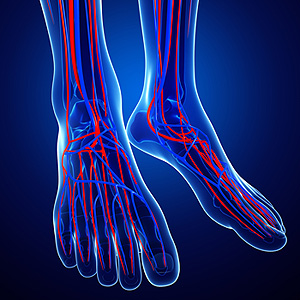 Poor circulation in the feet is commonly caused by the body’s inability to carry blood to the lower extremities. It usually stems from blockages in the arteries, although there may be several contributing factors which can cause this condition. It helps to be aware of how you’re feeling, because many symptoms can be disguised as average aches and pains associated with aging. Symptoms may include numbness, an icy feeling in the feet, and pain in the calves while walking. Discoloration in the toes, swelling in the feet or having dry skin are additional signs that you may suffer from poor circulation. There are factors that may lead to this condition, such as poor diet, lack of regular exercise, and standing for extended periods of time without moving. Lifestyle changes may help by improving blood flow. These may include exercise, diet changes, hot and cold therapy, and elevation of the legs, especially while sleeping. If you’re experiencing pain in the legs and feet, please consult a podiatrist for a proper diagnosis.
Poor circulation in the feet is commonly caused by the body’s inability to carry blood to the lower extremities. It usually stems from blockages in the arteries, although there may be several contributing factors which can cause this condition. It helps to be aware of how you’re feeling, because many symptoms can be disguised as average aches and pains associated with aging. Symptoms may include numbness, an icy feeling in the feet, and pain in the calves while walking. Discoloration in the toes, swelling in the feet or having dry skin are additional signs that you may suffer from poor circulation. There are factors that may lead to this condition, such as poor diet, lack of regular exercise, and standing for extended periods of time without moving. Lifestyle changes may help by improving blood flow. These may include exercise, diet changes, hot and cold therapy, and elevation of the legs, especially while sleeping. If you’re experiencing pain in the legs and feet, please consult a podiatrist for a proper diagnosis.
Poor circulation is a serious condition and needs immediate medical attention. If you have any concerns with poor circulation in your feet contact one of our podiatrists of The Foot Specialists. Our doctors will treat your foot and ankle needs.
Poor Circulation in the Feet
Poor blood circulation in the feet and legs is can be caused by peripheral artery disease (PAD), which is the result of a buildup of plaque in the arteries.
Plaque buildup or atherosclerosis results from excess calcium and cholesterol in the bloodstream. This can restrict the amount of blood which can flow through the arteries. Poor blood circulation in the feet and legs are sometimes caused by inflammation in the blood vessels, known as vasculitis.
Causes
Lack of oxygen and oxygen from poor blood circulation restricts muscle growth and development. It can also cause:
- Muscle pain, stiffness, or weakness
- Numbness or cramping in the legs
- Skin discoloration
- Slower nail & hair growth
- Erectile dysfunction
Those who have diabetes or smoke are at greatest risk for poor circulation, as are those who are over 50. If you have poor circulation in the feet and legs it may be caused by PAD and is important to make changes to your lifestyle in order to reduce risk of getting a heart attack or stroke. Exercise and maintaining a healthy lifestyle will dramatically improve conditions.
As always, see a podiatrist as he or she will assist in finding a regimen that suits you. A podiatrist can also prescribe you any needed medication.
If you have any questions please feel free to contact our offices located in Waltham and Milford, MA . We offer the newest diagnostic and treatment technologies for all your foot and ankle needs.
Blisters and Diabetic Foot Care
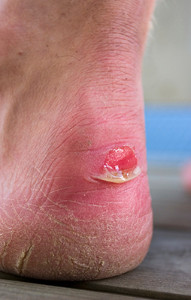 Diabetics need to take proper care of their feet due to their condition. Diabetes often causes poor blood circulation and neuropathy, which causes sensation loss in the extremities and lower limbs. If a diabetic gets a blister on his or her foot, he or she may not even realize it exists. If left unchecked, a blister can become infected and potentially infect the rest of the foot; in worst cases, this may then require amputation. Prevention is key, so wearing well-fitted shoes, conducting everyday foot exams, maintaining proper foot care, and visiting a podiatrist every several months can all help prevent a foot ulcer. If you have a foot ulcer and are diabetic, it is recommended that you see a podiatrist who can provide proper care and attention to the wound.
Diabetics need to take proper care of their feet due to their condition. Diabetes often causes poor blood circulation and neuropathy, which causes sensation loss in the extremities and lower limbs. If a diabetic gets a blister on his or her foot, he or she may not even realize it exists. If left unchecked, a blister can become infected and potentially infect the rest of the foot; in worst cases, this may then require amputation. Prevention is key, so wearing well-fitted shoes, conducting everyday foot exams, maintaining proper foot care, and visiting a podiatrist every several months can all help prevent a foot ulcer. If you have a foot ulcer and are diabetic, it is recommended that you see a podiatrist who can provide proper care and attention to the wound.
Blisters are prone to making everyday activities extremely uncomfortable. If your feet are hurting, contact one of our podiatrists of The Foot Specialists. Our doctors can provide the care you need to keep you pain-free and on your feet.
Foot Blisters
Foot blisters develop as a result of constantly wearing tight or ill-fitting footwear. This happens due to the constant rubbing from the shoe, which can often lead to pain.
What Are Foot Blisters?
A foot blister is a small fluid-filled pocket that forms on the upper-most layer of the skin. Blisters are filled with clear fluid and can lead to blood drainage or pus if the area becomes infected.
How Do Blisters Form?
Blisters on the feet are often the result of constant friction of skin and material, usually by shoe rubbing. Walking in sandals, boots, or shoes that don’t fit properly for long periods of time can result in a blister. Having consistent foot moisture and humidity can easily lead to blister formation.
Prevention & Treatment
It is important to properly care for the affected area in order to prevent infection and ease the pain. Do not lance the blister and use a Band-Aid to provide pain relief. Also, be sure to keep your feet dry and wear proper fitting shoes. If you see blood or pus in a blister, seek assistance from a podiatrist.
If you have any questions, please feel free to contact our offices located in Waltham and Milford, MA . We offer the newest diagnostic and treatment technologies for all your foot care needs.
Blisters on the Feet
Blisters are a common ailment of people who wear shoes that are either too tight or rub against the feet in an uncomfortable way. Knowing the basics of blisters is important for understanding how they are formed and what treatments should be used for them.
A blister on the foot, or any other part of the body, is a small pocket that is filled with fluid. It usually forms on the upper layer of the skin because these layers are loose enough to allow a blister to form. The most common fluid in a blister is just a clear, watery-like fluid that usually isn’t cause for concern. However, blisters can fill up with blood if they are deep enough and pus if they have become infected with bacteria.
Blisters almost always form on the feet due to shoes rubbing up against the foot, where the friction causes blisters. These can occur after you have walked for a long period of time or when your shoes do not fit you properly. Your feet are also more prone to blisters if they are moist, so keeping them dry and clean is one preventative step you can take.
Preventing infection should be the number one concern when treating blisters, as well as relieving the pain they can cause. Using a bandage to cover up the blister will help it heal and prevent bacteria from entering it. New skin will form under the blister and eventually cause it to pop. You can also take a sterilized pin and try to pop it yourself.
If the blister is filled with pus or blood, seeking treatment from a doctor is ideal. Antibiotics may need to be taken in order to completely eliminate the bacteria inside the blister. See a doctor to have an antibiotic prescribed.
The best way to treat blisters is to prevent them all together. Keeping your feet dry and making sure that your shoes fit properly are just two of the steps you can take to prevent blisters. Shoes that are too tight or shoes that are too loose and allow your feet to slide in them will cause blisters. Applying a bandage to an area where you think a blister is about to form is another way you can prevent them.
How to Treat a Broken Toe
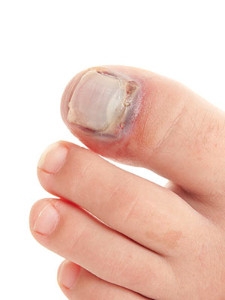 Stubbing your toe on a piece of furniture or dropping something on your foot may result in a painful toe fracture. Most fractures heal in 4 to 6 weeks with proper medical care from a podiatrist. The toe may swell and bruise, and it can be difficult to walk on. During the first few days, elevating your foot can be beneficial in reducing pain and swelling. Applying an ice pack and resting the toe by limiting standing and walking can further aid in the recovery. An X-ray may be necessary to determine the severity. Normal activities can be resumed once you can wear normal footwear and can walk around without pain. Please consult a podiatrist for treatment if you have pain in your toe, or feel that your toe might be broken. While some fractures may not cause excessive pain or seem harmful, they can become problematic or not heal properly.
Stubbing your toe on a piece of furniture or dropping something on your foot may result in a painful toe fracture. Most fractures heal in 4 to 6 weeks with proper medical care from a podiatrist. The toe may swell and bruise, and it can be difficult to walk on. During the first few days, elevating your foot can be beneficial in reducing pain and swelling. Applying an ice pack and resting the toe by limiting standing and walking can further aid in the recovery. An X-ray may be necessary to determine the severity. Normal activities can be resumed once you can wear normal footwear and can walk around without pain. Please consult a podiatrist for treatment if you have pain in your toe, or feel that your toe might be broken. While some fractures may not cause excessive pain or seem harmful, they can become problematic or not heal properly.
A broken toe can be very painful and lead to complications if not properly fixed. If you have any concerns about your feet, contact one of our podiatrists from The Foot Specialists. Our doctors will treat your foot and ankle needs.
What to Know About a Broken Toe
Although most people try to avoid foot trauma such as banging, stubbing, or dropping heavy objects on their feet, the unfortunate fact is that it is a common occurrence. Given the fact that toes are positioned in front of the feet, they typically sustain the brunt of such trauma. When trauma occurs to a toe, the result can be a painful break (fracture).
Symptoms of a Broken Toe
- Throbbing pain
- Swelling
- Bruising on the skin and toenail
- The inability to move the toe
- Toe appears crooked or disfigured
- Tingling or numbness in the toe
Generally, it is best to stay off of the injured toe with the affected foot elevated.
Severe toe fractures may be treated with a splint, cast, and in some cases, minor surgery. Due to its position and the pressure it endures with daily activity, future complications can occur if the big toe is not properly treated.
If you have any questions please feel free to contact our offices located in Waltham and Milford, MA . We offer the newest diagnostic and treatment technologies for all your foot and ankle needs.
What to Know About a Broken Toe
Trauma to the foot, especially the toes, can occur in many ways. Banging them, stubbing them, or dropping something on them are a few different ways this trauma can occur. Given the fact that toes are positioned in front of the feet, they typically sustain the brunt of such trauma. When trauma occurs to a toe, the result can be a painful break or fracture. Another type of trauma that can break a toe is repeated activity that places stress on the toe for prolonged periods of time.
Broken toes can be categorized as either minor or severe fractures. Symptoms of minor toe fractures include throbbing pain, swelling, bruising on the skin and toenail, and the inability to move the toe with ease. Severe toe fractures require medical attention and are indicated when the broken toe appears crooked or disfigured, when there is tingling or numbness in the toe, or when there is an open, bleeding wound present on the toe.
Generally, a minor toe break will heal without long-term complications. However, it is important to discontinue activities that put pressure on the toe. It is best to stay off of the injured toe and immediately get a splint or cast to prevent any more additional movement of the toe bones. You can also immobilize your toe by placing a small cotton ball between the injured toe and the toe beside it. Then, tape the two toes together with medical tape. Swelling can be alleviated by placing an ice pack on the broken toe directly as well as elevating your feet above your head.
Severe toe fractures may be treated with a splint, cast, and in some cases, minor surgery, especially when the big toe has been broken. Due to its position and the pressure the big toe endures with daily activity, future complications can occur if it is not properly treated. Pain associated with minor toe fractures can be managed with over-the-counter pain medications. Prescription pain killers may be necessary for severe toe fractures.
The healing time for a broken toe is approximately four to six weeks. In severe cases where the toe becomes infected or requires surgery, healing time can take up to eight weeks or more. While complications associated with a broken toe are immediately apparent, it is important to note that there are rare cases when additional complications, such as osteoarthritis, can develop over time. You should immediately speak with your podiatrist if you think you have broken your toe due to trauma. They will be able to diagnose the injury and recommend the appropriate treatment options.
Causes of Hammertoe
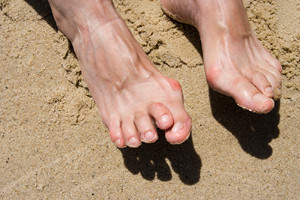 Weakened muscles in the toe may cause the tendons to become shorter, enabling the middle joint in the toes to protrude. There may be several causes of this particular condition, referred to as hammertoe, including an inherited predisposition. Symptoms may include experiencing difficulty in walking or not being able to flex and point your toes. Wearing proper footwear is important, especially keeping the heels to 2 inches or less. If the toes are not able to stretch, surgery may be an option. A consultation with a podiatrist is recommended for a proper diagnosis and the best treatment options.
Weakened muscles in the toe may cause the tendons to become shorter, enabling the middle joint in the toes to protrude. There may be several causes of this particular condition, referred to as hammertoe, including an inherited predisposition. Symptoms may include experiencing difficulty in walking or not being able to flex and point your toes. Wearing proper footwear is important, especially keeping the heels to 2 inches or less. If the toes are not able to stretch, surgery may be an option. A consultation with a podiatrist is recommended for a proper diagnosis and the best treatment options.
Hammertoe
Hammertoes can be a painful condition to live with. For more information, contact one of our podiatrists from The Foot Specialists. Our doctors will answer any of your foot- and ankle-related questions.
Hammertoe is a foot deformity that affects the joints of the second, third, fourth, or fifth toes of your feet. It is a painful foot condition in which these toes curl and arch up, which can often lead to pain when wearing footwear.
Symptoms
- Pain in the affected toes
- Development of corns or calluses due to friction
- Inflammation
- Redness
- Contracture of the toes
Causes
Genetics – People who are genetically predisposed to hammertoe are often more susceptible
Arthritis – Because arthritis affects the joints in your toes, further deformities stemming from arthritis can occur
Trauma – Direct trauma to the toes could potentially lead to hammertoe
Ill-fitting shoes – Undue pressure on the front of the toes from ill-fitting shoes can potentially lead to the development of hammertoe
Treatment
Orthotics – Custom made inserts can be used to help relieve pressure placed on the toes and therefore relieve some of the pain associated with it
Medications – Oral medications such as anti-inflammatories or NSAIDs could be used to treat the pain and inflammation hammertoes causes. Injections of corticosteroids are also sometimes used
Surgery – In more severe cases where the hammertoes have become more rigid, foot surgery is a potential option
If you have any questions please contact our offices located in Waltham and Milford, MA . We offer the newest diagnostic and treatment technologies for all your foot and ankle needs.
Everything You Need to Know About Gout
Gout, typically found in diabetic patients, is an unusually painful form of arthritis caused by elevated levels of uric acid in the bloodstream. The condition typically strikes the big joint on the big toe. It has also been known to strike the knees, elbows, fingers, ankles and wrists—generally anywhere that has a functioning, moving joint.
The high level of uric acid in a person’s bloodstream creates the condition known as hyperuricema—the main cause of gout. Genetic predisposition occurs in nine out of ten sufferers. The children of parents who suffer gout will have a two in ten chance of developing the condition as well.
This form of arthritis, being particularly painful, is the leftover uric acid crystallizing in the blood stream. The crystallized uric acid then travels to the space between joints where they rub, causing friction when the patient moves. Symptoms include: pain, redness, swelling, and inflammation. Additional side effects may include fatigue and fever, although reports of these effects are very rare. Some patients have reported that pain may intensify when the temperature drops, such as when you sleep.
Most cases of gout are easily diagnosed by a podiatrist’s assessment of the various symptoms. Defined tests can also be performed. A blood test to detect elevated levels of uric acid is often used as well as an x-ray to diagnose visible and chronic gout.
Treatment for gout simply means eliminating symptoms. Non-steroid anti-inflammatory drugs or NSAIDs (Colchicine and other corticosteroid drugs, etc.) will quell the redness, the swelling, and the inflammation. However, managing your diet, lifestyle changes, and using preventative drugs are all helpful toward fully combating the most severe cases.
Those that lead an inactive lifestyle are at a higher risk for gout. Any amount of exercise decreases the probability of repeat encounters with the condition. Reducing your consumption of red meat, sea food, and fructose-sweetened drinks also reduces the likelihood of chronic gout as well.
Ingesting Vitamin C, coffee, and particular dairy products can help with maintaining a healthy lifestyle. There are new drugs out on the market that inhibit the body’s production of uric acid-producing enzymes. However, reducing or eliminating your overall levels of uric acid is the best remedy to ensuring you lead a gout-free life.
How to Treat Corns
When the skin on the foot rubs against a shoe, there is a chance a corn will develop. Typically, the pressure from this causes the skin to thicken; this may produce extreme pain, affecting the deeper layers of the skin. Hard corns are generally caused by poorly fitted shoes and may develop on the top of the toes. Corns that affect the area in between the toes are referred to as soft corns, and moisture from the toes may be the underlying reason for this condition. Occasionally, corns may develop on the soles of the feet, most likely caused by running or walking. There may be several treatment options available, including having a podiatrist trim the corn down, which will ease the pressure. Wearing shoes that fit properly, in addition to applying a moisturizer regularly will help to manage the corn once it’s trimmed. Chemical treatments may also be effective, which may help the corn to be less painful. Please consult with a podiatrist, especially if you have diabetes or poor circulation, for a recommendation for the best treatment options.
If you have any concerns regarding your feet and ankles, contact one of our podiatrists of The Foot Specialists. Our doctors will treat your foot and ankle needs.
Corns: What Are They? and How Do You Get Rid of Them?
Corns can be described as areas of the skin that have thickened to the point of becoming painful or irritating. They are often layers and layers of the skin that have become dry and rough, and are normally smaller than calluses.
Ways to Prevent Corns
There are many ways to get rid of painful corns such as wearing:
- Well-fitting socks
- Comfortable shoes that are not tight around your foot
- Shoes that offer support
Treating Corns
Treatment of corns involves removing the dead skin that has built up in the specific area of the foot. Consult with Our doctors to determine the best treatment option for your case of corns.
If you have any questions please feel free to contact our offices located in Waltham and Milford, MA . We offer the newest diagnostic and treatment technologies for all your foot and ankle needs.
Pregnancy and Foot Health
Many pregnant women complain about foot pain while they are expecting. Foot pain can primarily be caused by weight gain and hormonal changes taking place in the body. By understanding how pregnancy impacts the health of a woman's feet, a pregnant woman can take action to keep her feet as healthy and comfortable as possible.
Because a woman's weight changes during pregnancy, more pressure is brought to bear on both the legs and the feet. This weight shift can cause two major foot problems: over-pronation, also known as flat feet, as well as edema, which is swelling of the feet. Over-pronation occurs when the arch of the foot flattens, causing the foot to roll inwards when the individual is walking, and can aggravate the plantar fascia tissues located along the bottom of the feet. If these tissues become inflamed, a pregnant woman can experience pain in the heel of the foot as well as severe foot pain while walking or standing. Swelling of the feet, or edema, often occurs in the later stages of pregnancy. It is caused by slow circulation and water retention, and may turn the feet a light purple color.
To keep feet in good health and prevent over-pronation, pregnant women should avoid walking barefoot and be sure they are wearing shoes that offer good arch support. A device known as an orthotic can be added to regular footwear in order to provide additional support for the feet during pregnancy. Any expectant mother whose feet hurt should first check to see if the shoes she is wearing are old, worn out and not offering the proper support necessary for distributing the weight of her body during pregnancy.
To treat edema of the feet, a good start is to wear quality footwear which offers support and good circulation. Keep feet elevated whenever possible by using a foot stool while seated. Stay well hydrated by drinking plenty of water to prevent water retention in the feet. Any swelling that occurs in only one foot should be examined as soon as possible by a doctor.
Good foot health during pregnancy can help expectant mothers avoid foot pain that leads to other health problems. Massaging the feet and doing regular gentle exercise like walking aids foot health by contributing to good circulation. Supportive shoes are also a good investment that will support foot health during pregnancy.
